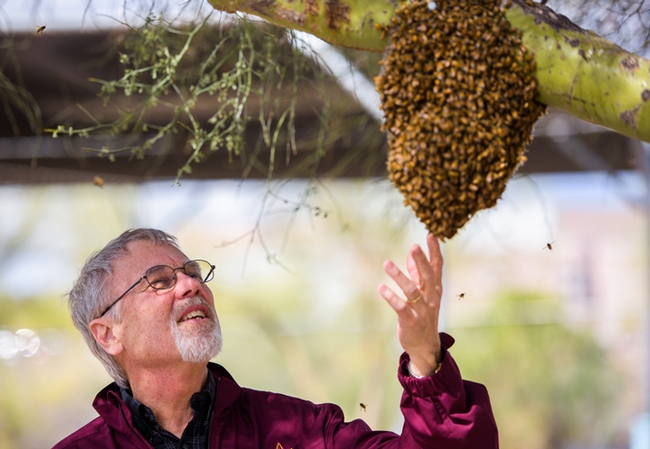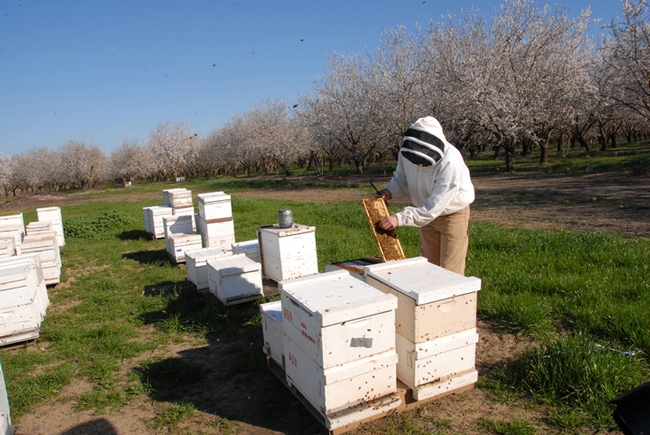- Author: Kathy Keatley Garvey
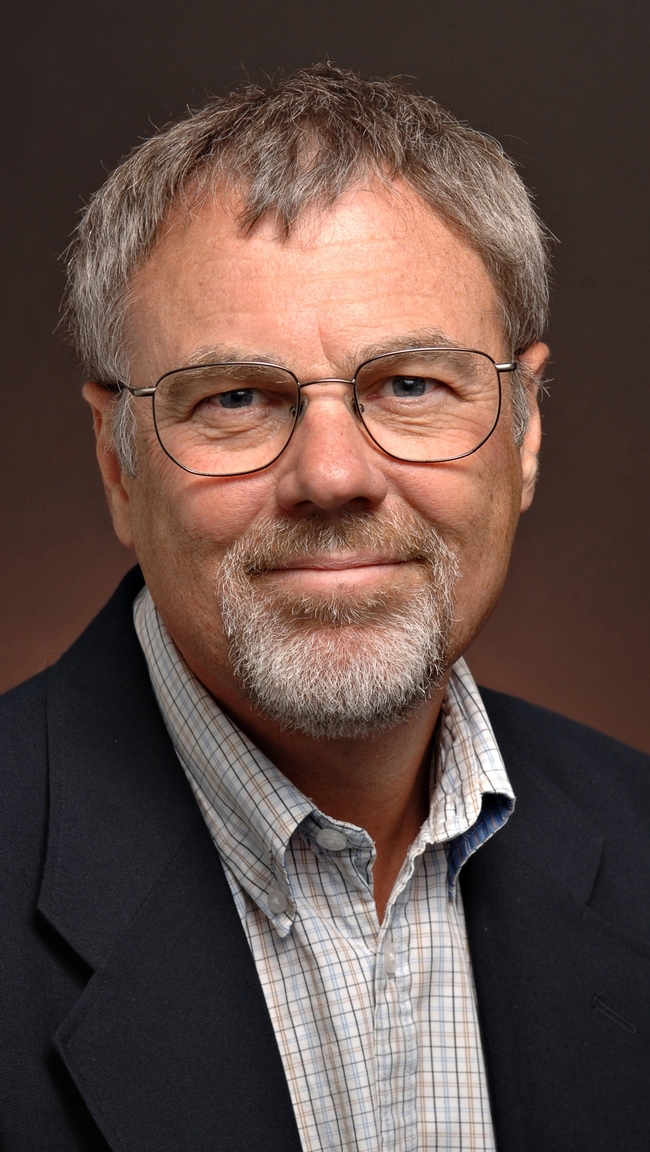
“I was thrilled to be invited to write this perspectives/review of my scientific career; it is a collection of 30 years of single-minded focus on one question,” said Page, who is renowned for his research on honey bee behavior and population genetics, particularly the evolution of complex social behavior, and for his work on the first genomic map of the honey bee.
"The editors contacted me to write a perspectives/review that focuses on my own work, a study in complex adaptation,” Page related. “This is the first time they have done a perspectives article like this. I was, of course, honored. More than half of the work was done at UC Davis.”
“Understanding the organization and evolution of social complexity is a major task because it requires building an understanding of mechanisms operating at different levels of biological organization from genes to social interactions,” Page wrote in his abstract. “I discuss here, a unique forward genetic approach spanning more than 30 years beginning with human-assisted colony-level selection for a single social trait, the amount of pollen honey bees (Apis mellifera L.) store. The goal was to understand a complex social trait from the social phenotype to genes responsible for observed trait variation.”
“The approach,” Page wrote, “combined the results of colony-level selection with detailed studies of individual behavior and physiology resulting in a mapped, integrated phenotypic architecture composed of correlative relationships between traits spanning anatomy, physiology, sensory response systems, and individual behavior that affect individual foraging decisions. Colony-level selection reverse engineered the architecture of an integrated phenotype of individuals resulting in changes in the social trait. Quantitative trait locus (QTL) studies combined with an exceptionally high recombination rate (60 kb/cM), and a phenotypic map, provided a genotype–phenotype map of high complexity demonstrating broad QTL pleiotropy, epistasis, and epistatic pleiotropy suggesting that gene pleiotropy or tight linkage of genes within QTL integrated the phenotype. Gene expression and knockdown of identified positional candidates revealed genes affecting foraging behavior and confirmed one pleiotropic gene, a tyramine receptor, as a target for colony-level selection that was under selection in two different tissues in two different life stages. The approach presented here has resulted in a comprehensive understanding of the structure and evolution of honey bee social organization.”
Page, who received his doctorate in entomology (1980) from UC Davis, joined the UC Davis entomology faculty in 1989, and chaired the department from 1999-2004. In 2004, Arizona State University recruited him as founding director of its School of Life Sciences. His career advanced from dean of Life Sciences, to vice provost and dean of the College of Liberal Arts and Sciences, to university provost. Today he holds the titles of ASU provost emeritus, ASU Regents professor emeritus, and UC Davis distinguished emeritus professor, an award bestowed in 2019.
At UC Davis, Page worked closely with Harry H. Laidlaw Jr., (the father of honey bee genetics) for whom the university's bee facility is named.
For 24 years, from 1989 to 2015, Page maintained a UC Davis honey bee-breeding program, managed by bee breeder-geneticist Kim Fondrk at the Harry H. Laidlaw Jr. Honey Bee Research Facility. Together they discovered a link between social behavior and maternal traits in bees.
Page has authored than 250 research papers, including five books: among them, The Spirit of the Hive: The Mechanisms of Social Evolution, published by Harvard University Press in 2013. His most recent book is The Art of the Bee: Shaping the Environment from Landscapes to Societies, published by Oxford University Press 2020. (See news release on why bees are both artists and engineers.)
Page is a highly cited author on such topics as Africanized bees, genetics and evolution of social organization, sex determination, and division of labor in insect societies.

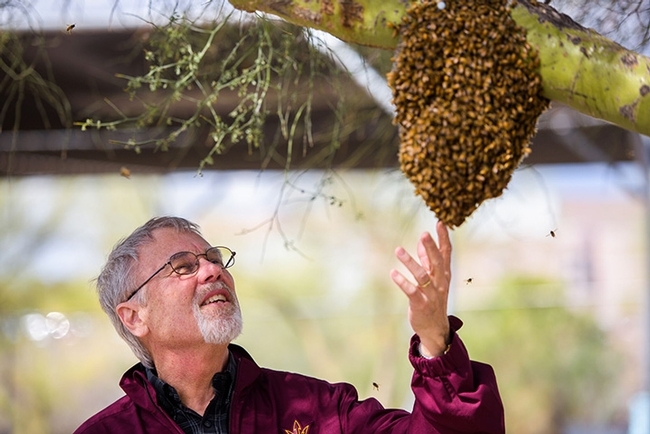
- Author: Kathy Keatley Garvey
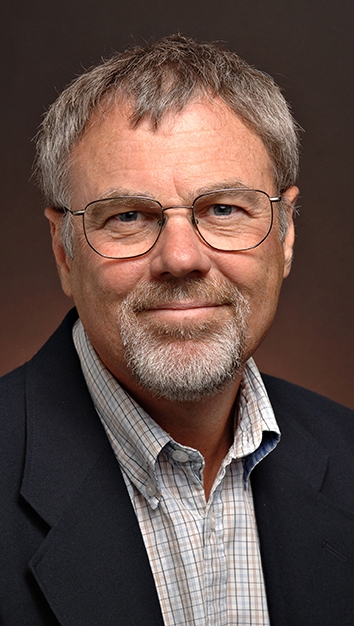
As environmental artists, bees are "responsible for the brilliantly colored flowers in our landscapes," and as environmental engineers, they engineer “the niches of multitudes of plants, animals and microbes.”
Page, with UC Davis roots and Arizona State University wings, has just authored a 256-page book, “The Art of the Bee: Shaping the Environment from Landscapes to Societies” (Oxford University Press), to be published Aug. 6.
“It's a long time in the making,” said Page, who received his doctorate in entomology at UC Davis and served as a professor and chair of the Department of Entomology (now Entomology and Nematology) before heading to Arizona State University (ASU), where he advanced to school director, college dean and university provost.
“Twenty-five years ago, my friend and mentor Harry Laidlaw (for whom the UC Davis bee facility is named) wanted to write a honey bee biology textbook,” Page recalled. When they finished the outline, “it looked very much like the excellent book by Mark Winston The Biology of the Honey Bee, published in 1987 by Harvard University Press. I decided we didn't need another one, and we still don't.”
The book differs in that it's a collection of “sparkling essays” that “read like mystery stories,” said Rudiger Wehner, professor and director emeritus of the Institute of Zoology, University of Zürich. “With these lucidly written stories, Page takes us on a delightful journey through the many biological traits that on the whole constitute the honeybees' social contract.”
“But don't be fooled by the amiable and personal style—the book is comprehensive—from colony collapse disorder to colony-level evolution—and chock full of the latest results, presented with clarity and depth, leavened with razor-sharp insights into social evolution,” noted Gene Robinson, director, Carl R. Woese Institute for Genomic Biology and Department of Entomology, University of Illinois at Urbana-Champaign.
Page said his book is geared toward “the person who has a basic knowledge of biology and a fascination with bees, perhaps an educated hobby beekeeper--there are a lot of them--or an undergraduate or graduate student with an interest.”
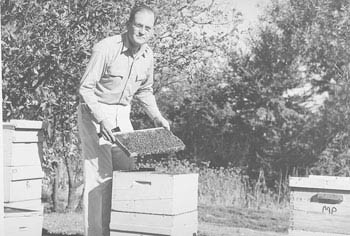
In addition to chapters on environmental artists and environmental engineering, Page includes chapters on social contracts, superorganisms, reproductive competitions, and concludes with “The song of the queen.”
In the epilogue, Page ponders the complexity of individual bees and their colonies, comparing them to humans. “Members of complex societies live close together in closed nests, shared home sites, villages, etc., or in closely connected nomadic tribes. As groups, they typically have a set of tacit rules by which they live that involves working for the good of the group, systems of group and resource defense, internal mechanisms of policing cheaters that don't cooperate and live by the rules, a division of labor often associated with group defense and gathering and sharing resources, and usually asymmetries and rules associated with reproduction. These same general characteristics seem to apply broadly across eusocial insects (aphids, termites, bees, ants, and wasps), eusocial rodents (naked mole rats), higher apes, and humans. Why? The similarities are inescapable due to the nature of social contracts; they must have specific elements to protect the power and will of individuals, whether citizens of the United States of America or workers in a honey bee colony. The contract binds individuals to a society, but the specific social organization evolves by reverse engineering. Natural selection acts on the whole colony; social structure evolves to fit the needs of the group within a given environment. “
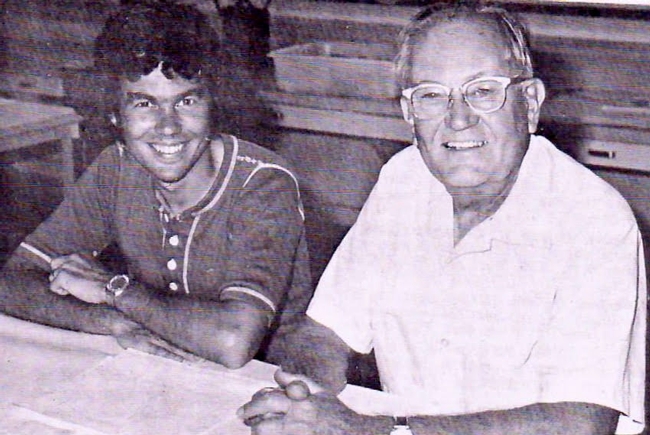
Page points out that “Anthropocentric thinking can obscure the way we view nature and lead to false conclusions. Look at Aristotle and honey bee division of labor: For more than 2,000 years it was thought that the bees that work in the nest were postpubescent old men because they're hairy! In fact, the older bees forage and aren't hairy because the hairs break off as they age. I now see my work in a new light; we aren't so different, bees and humans. The elements of our social structures, and how they come about, have many similarities.”
Page is known for his research on honey bee behavior and population genetics, particularly the evolution of complex social behavior. One of his most salient contributions to science was to construct the first genomic map of the honey bee, which sparked a variety of pioneering contributions not only to insect biology but to genetics at large.
At UC Davis, he maintained a honey bee-breeding program for 24 years, from 1989 to 2015, managed by bee breeder-geneticist Kim Fondrk at the Harry H. Laidlaw Jr. Honey Bee Research Facility. They discovered a link between social behavior and maternal traits in bees.
UC Davis named him the 2019 distinguished emeritus professor. Nominator Steve Nadler, professor and chair of the UC Davis Department of Entomology and Nematology, praised Page as “a pioneer researcher in the field of behavioral genetics, an internationally recognized scholar, a highly respected author, a talented and innovative administrator, and a skilled teacher responsible for mentoring many of today's top bee scientists…he is arguably the most influential honey bee biologist of the past 30 years.”
Page has authored more than 250 research papers, including five books. Among them “The Spirit of the Hive: The Mechanisms of Social Evolution” (Harvard University Press, 2013) and “Queen Rearing and Bee Breeding,” with Harry H. Laidlaw (Wicwas Press, 1997). He is a highly cited author on such topics as Africanized bees, genetics and evolution of social organization, sex determination, and division of labor in insect societies.
Page, who received his doctorate in entomology from UC Davis in 1980, joined the UC Davis faculty in 1989 and left as emeritus chair of the Department of Entomology in 2004 when ASU recruited him for what would become a series of top-level administrative roles. He advanced from director of the School of Life Sciences to dean of Life Sciences; vice provost and dean of the College of Liberal Arts and Sciences; and university provost. Today he holds the titles of provost emeritus of ASU and Regents professor emeritus, as well as UC Davis department chair emeritus, professor emeritus, and UC Davis distinguished emeritus professor.
Page is an elected member of the American Academy of Arts and Sciences, the Brazilian Academy of Science, Leopoldina (the German National Academic of Science), and the California Academy of Science. He is a recipient of the Alexander von Humboldt Senior Scientist Award (Humboldt Prize, 1995), the Carl Friedrich von Siemens Fellowship (2013), James W. Creasman Award of Excellence at ASU (2018).
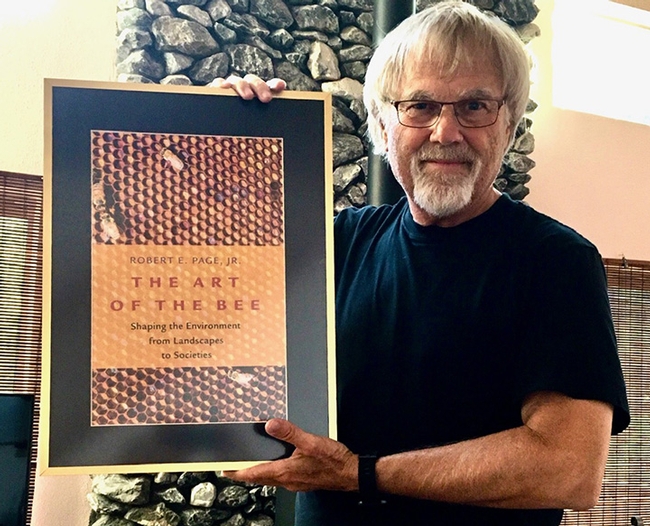
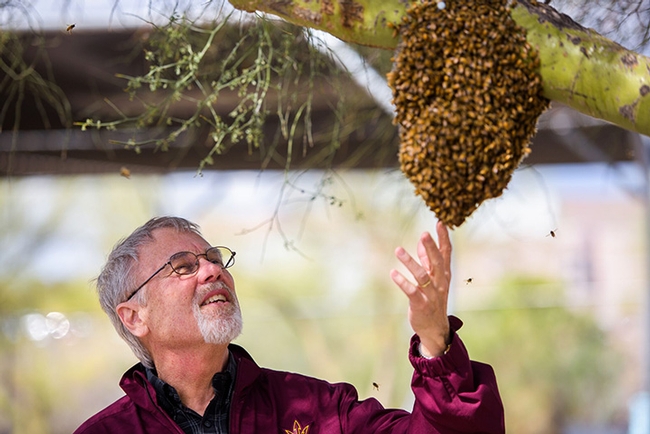
- Author: Kathy Keatley Garvey
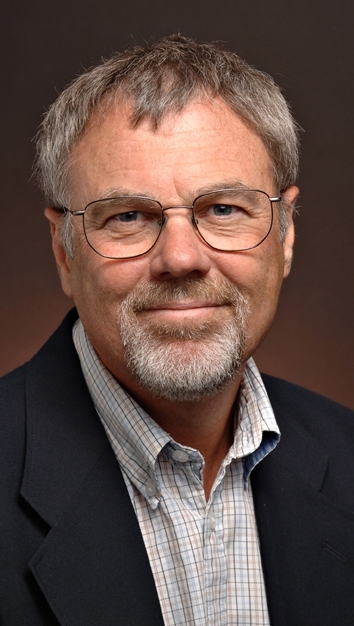
His talk, free and open to the public, is sponsored by the UC Davis Emeriti Association and the UC Davis Retirees' Association.
“Honey bees exhibit complex social behavior that rivals our own,” Page says. “It is fundamentally bound within a social contract much like ours that makes the basic social structure inescapable, a consequence of living together in family groups. Social structures evolve by natural selection operating on the final product, the colony as a reproductive unit. The structures themselves are reverse engineered.”
“I will show how selection on the economy of the colony shapes structures from nest and social architecture to gene networks.”
Page is a UC Davis Distinguished Emeritus Professor, an honor awarded in January; and a Regents Professor Emeritus and University Provost Emeritus from Arizona State University, Tempe. He retired from UC Davis in May 2004 after chairing the Department of Entomology, now the Department of Entomology and Nematology.
Born and reared in Bakersfield, Kern County, Rob received his bachelor's degree in entomology, with a minor in chemistry, from San Jose State University in 1976. After obtaining his doctorate from UC Davis in 1980, he served as assistant professor at The Ohio State University before joining the UC Davis entomology faculty in 1989 as an associate professor. He began working closely with Harry H. Laidlaw Jr., (the father of honey bee genetics) for whom the university's bee facility is named. Together they published many significant research papers.
Page chaired the Department of Entomology from 1999 to 2004, when Arizona State University recruited him to be the founding director of the School of Life Sciences of Arizona State University (ASU). His ASU career advanced to dean of Life Sciences; vice provost and dean of the College of Liberal Arts and Sciences; and university provost.
Page is known for his research on honey bee behavior and population genetics, particularly the evolution of complex social behavior. One of his most salient contributions to science was to construct the first genomic map of the honey bee, which sparked a variety of pioneering contributions not only to insect biology but to genetics at large.
At UC Davis, he maintained a honey bee-breeding program for 24 years, from 1989 to 2015, managed by bee breeder-geneticist Kim Fondrk at the Harry H. Laidlaw Jr. Honey Bee Research Facility. They discovered a link between social behavior and maternal traits in bees. Their work was featured in a cover story in the journal Nature. In all, Nature featured his work on four covers from work mostly done at UC Davis.
Page and his lab pioneered the use of modern techniques to study the genetic basis of social behavior evolution in honey bees and other social insects. He was the first to employ molecular markers to study polyandry and patterns of sperm use in honey bees. He provided the first quantitative demonstration of low genetic relatedness in a highly eusocial species.
His work has garnered a significant impact in the scientific community through his research on the evolutionary genetics and social behavior of honey bees. He was the first to demonstrate that a significant amount of observed behavioral variation among honey bee workers is due to genotypic variation. In the 1990s, he and his students and colleagues isolated, characterized and validated the complementary sex determination gene of the honey bee; considered the most important paper yet published about the genetics of Hymenoptera. The journal Cell featured their work on its cover. In subsequent studies, he and his team published further research into the regulation of honey bee foraging, defensive and alarm behavior.
Page has authored than 250 research papers, including five books: among them “The Spirit of the Hive: The Mechanisms of Social Evolution,” published by Harvard University Press in 2013. He is a highly cited author on such topics as Africanized bees, genetics and evolution of social organization, sex determination, and division of labor in insect societies. His resume shows more than 18,000 citations.
Highly honored by his peers, Page is a fellow of a number of organizations, including the American Association for the Advancement of Science, the California Academy of Sciences, the Entomological Society of America, and organizations in Germany and Brazil. He received the Alexander von Humboldt Senior Scientist Award, known at the Humboldt Prize, the highest honor given by the German government to foreign scientists. He received the 2018 Thomas and Nina Leigh Distinguished Alumni Award from UC Davis Department of Entomology and Nematology.
The UC Davis Retiree Center periodically holds noon educational seminars ("BrainFood Talks") featuring timely speakers. For more information, contact the UC Davis Retiree Center at (530) 752-5182 or retireecenter@ucdavis.edu.
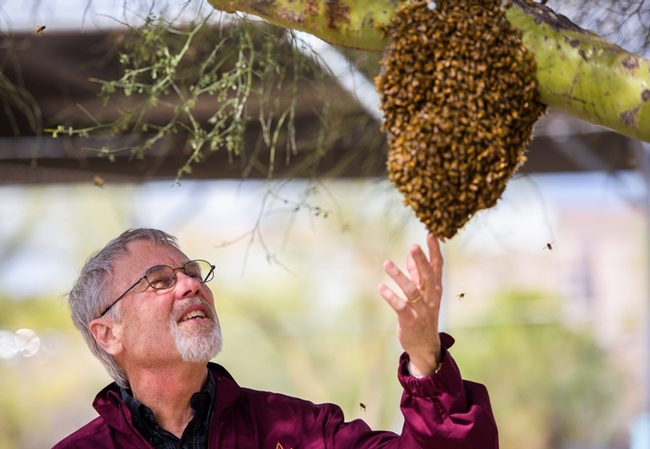
- Author: Kathy Keatley Garvey
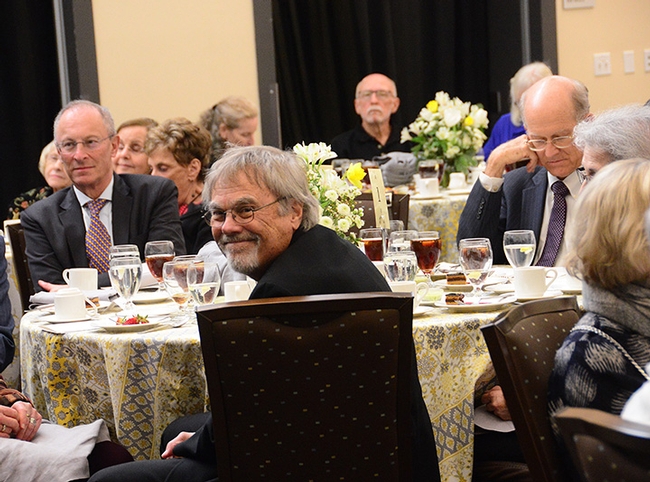
The award, administered by the UC Davis Emeriti Association, honors outstanding scholarship work or service performed since retirement by a UC Davis emeritus.
Distinguished professor emerita M. R. C. Greenwood, chair of the UC Davis Emeriti Association Awards and Recognition Committee, described him as a “pioneer researcher in the field of behavioral genetics, an internationally recognized scholar, a talented and innovative administrator, and a skilled teacher responsible for mentoring many of today's top bee scientists.”
Page's work on bee behavior “has set the standard nationally and internationally,” Greenwood said, adding “and many people in this room will know how important that research is to health and well being of our bees today.”
Page retired from UC Davis in 2004 after serving as chair of the Entomology Department (now the Department of Entomology and Nematology). “Then he was recruited to be the founding director of the School of Life Sciences at Arizona State University,” she said. “Today Dr. Page continues to work on how reproductive regulatory networks are altered by natural selection for division of labor in honor bees. As the 2019 UC Davis Distinguished Emeritus Professor, he does our university proud.”
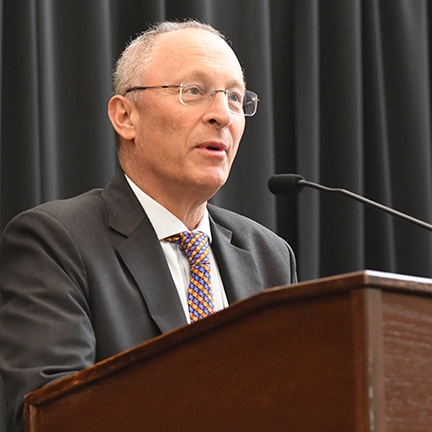
In accepting the award, Page called it “a great and distinct honor.”
“I have multiple attachments to UC Davis,” he said. “I was a graduate student here (doctorate in entomology in 1980) and my wife was an undergraduate who graduated from here.”
Page said he met and recognized many people at the emeriti luncheon. “I've walked around and my Damaged Facial Recognition Software was just kind of spinning around,” he quipped. “But at any rate, a number of you I definitely remember and recognize and some of you, I almost remember and recognize.”
UC Davis Provost and Executive Vice Chancellor Ralph Hexter welcomed the crowd. Chancellor Gary S. May chronicled some of the UC Davis national and international achievements, and thanked the academic retirees for “your dedicated service. And I wish you luck navigating this new chapter in your lives. So go boldly and Go Ags!” (UC Davis' strategic plan, “To Boldly Go,” outlines the aspirations and methods for guiding the university to new heights of distinction over the next 10 years.)
The chancellor introduced Greenwood as having “a highly distinguished career as a researcher and leader in higher education. “She was the first woman to serve in all of her leadership positions, including 14th president of the University of Hawaii, chancellor of UC Santa Cruz; and dean of Graduate Studies at UC Davis. An expert on obesity and diabetes, Dr. Greenwood most recently served as director of Foods for Health Initiative. She is also a distinguished professor emerita of nutrition and a current fellow of the National Academy of Arts and Sciences.”
“Our emeriti and retirees are a remarkable group of individuals,” Greenwood said. “A recent survey of the continuing teaching, research, mentoring and service for the entire University of California….showed that the collective continuing contributions of our academic retirees is the equivalent of an 11th campus—an 11th UC campus. So please let me please let me offer my congratulations to all of you who continue to help this magnificent campus. So give yourself a hand.”
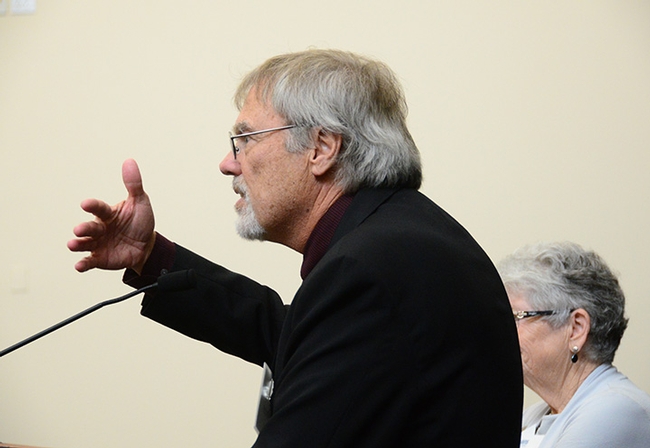
“Unfortunately, neither of our rewardees—since they are extremely busy in their retirement doing research—are able to be here today,” Greenwood told the crowd.
In his nomination letter, Steve Nadler, professor and chair of the UC Davis Department of Entomology and Nematology, wrote that “Robert Page is arguably the most influential honey bee biologist of the past 30 years,”
Born and reared in Bakersfield, Kern County, Rob received his bachelor's degree in entomology, with a minor in chemistry, from San Jose State University in 1976. After receiving his doctorate from UC Davis in 1980, he served as assistant professor at The Ohio State University before joining the UC Davis entomology faculty in 1989 as an associate professor. He began working closely with Harry H. Laidlaw Jr., (the father of honey bee genetics) for whom the university's bee facility is named. Together they published many significant research papers.
Page chaired the Department of Entomology from 1999 to 2004, when Arizona State University recruited him to be the founding director of the School of Life Sciences of Arizona State University (ASU). His ASU career advanced to dean of Life Sciences; vice provost and dean of the College of Liberal Arts and Sciences; and university provost.
Page is known for his research on honey bee behavior and population genetics, particularly the evolution of complex social behavior. One of his most salient contributions to science was to construct the first genomic map of the honey bee, which sparked a variety of pioneering contributions not only to insect biology but to genetics at large.
At UC Davis, he maintained a honey bee-breeding program for 24 years, from 1989 to 2015, managed by bee breeder-geneticist Kim Fondrk at the Harry H. Laidlaw Jr. Honey Bee Research Facility. They discovered a link between social behavior and maternal traits in bees. Their work was featured in a cover story in the journal Nature. In all, Nature featured his work on four covers from work mostly done at UC Davis.
Page and his lab pioneered the use of modern techniques to study the genetic basis of social behavior evolution in honey bees and other social insects. He was the first to employ molecular markers to study polyandry and patterns of sperm use in honey bees. He provided the first quantitative demonstration of low genetic relatedness in a highly eusocial species.
His work has garnered a significant impact in the scientific community through his research on the evolutionary genetics and social behavior of honey bees. He was the first to demonstrate that a significant amount of observed behavioral variation among honey bee workers is due to genotypic variation. In the 1990s, he and his students and colleagues isolated, characterized and validated the complementary sex determination gene of the honey bee; considered the most important paper yet published about the genetics of Hymenoptera. The journal Cell featured their work on its cover. In subsequent studies, he and his team published further research into the regulation of honey bee foraging, defensive and alarm behavior.
Page has authored than 250 research papers, including five books: among them “The Spirit of the Hive: The Mechanisms of Social Evolution,” published by Harvard University Press in 2013. He is a highly cited author on such topics as Africanized bees, genetics and evolution of social organization, sex determination, and division of labor in insect societies. His resume shows more than 18,000 citations.
Highly honored by his peers, Page is a fellow of a number of organizations, including the American Association for the Advancement of Science, the California Academy of Sciences, the Entomological Society of America, and organizations in Germany and Brazil. He received the Alexander von Humboldt Senior Scientist Award, known at the Humboldt Prize, the highest honor given by the German government to foreign scientists. He most recently received the Thomas and Nina Leigh Distinguished Alumni Award from UC Davis Department of Entomology and Nematology.
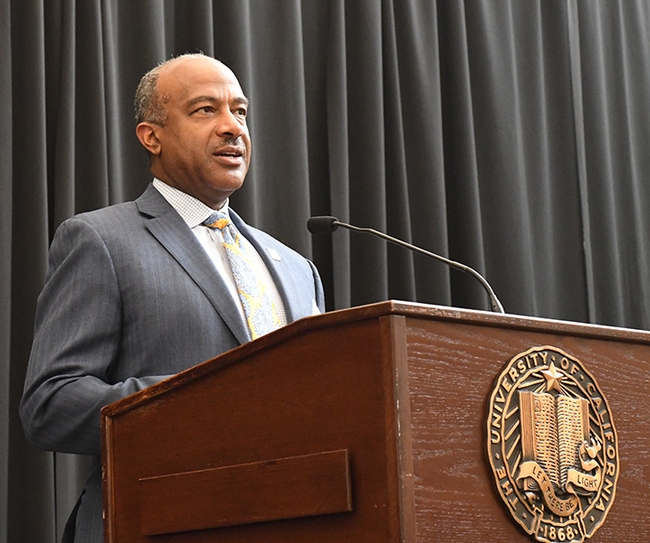
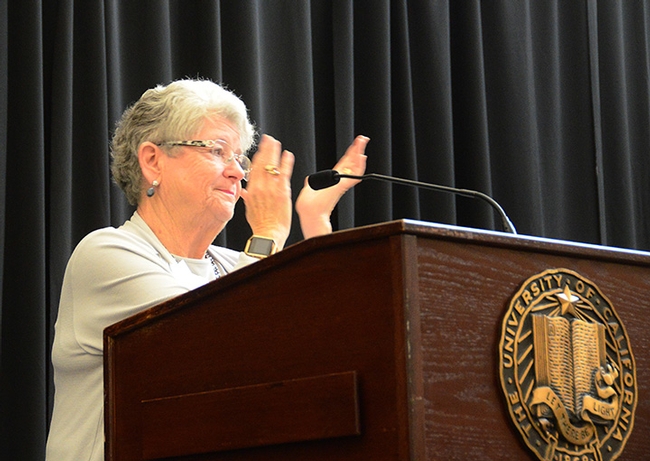
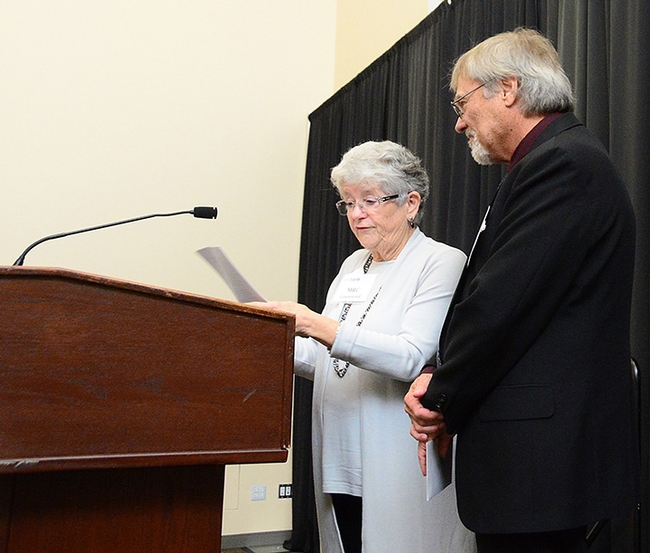
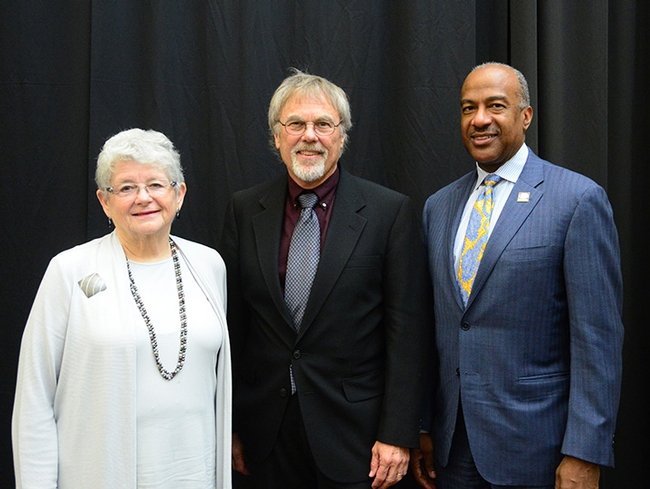

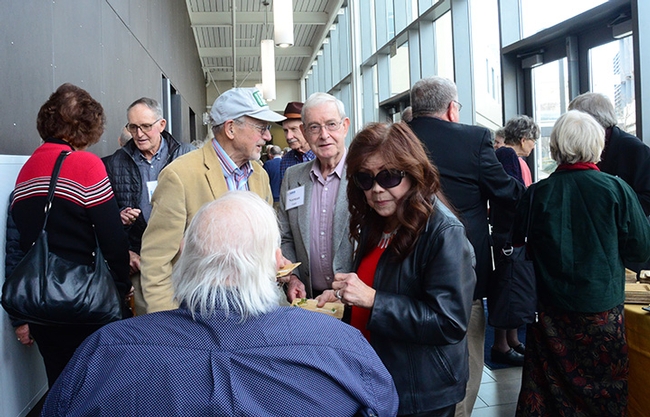
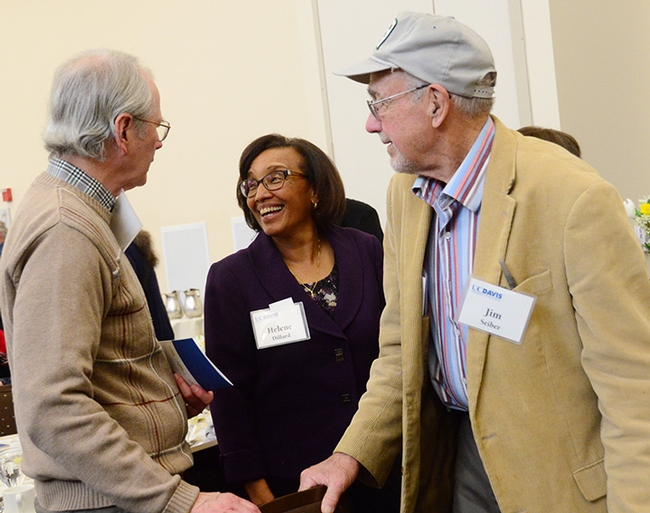
- Author: Kathy Keatley Garvey
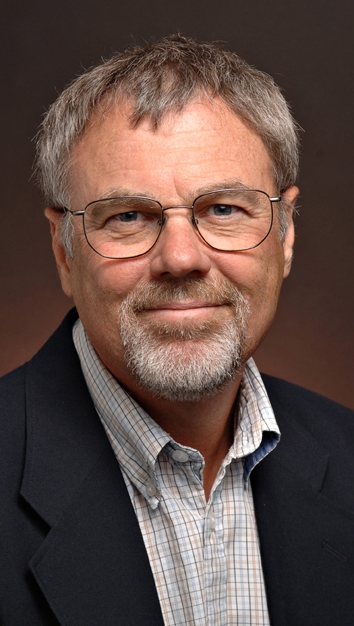
Nominator Steve Nadler, professor and chair of the UC Davis Department of Entomology and Nematology, praised Page as “a pioneer researcher in the field of behavioral genetics, an internationally recognized scholar, a highly respected author, a talented and innovative administrator, and a skilled teacher responsible for mentoring many of today's top bee scientists.”
“Robert Page is arguably the most influential honey bee biologist of the past 30 years,” Nadler wrote in his letter of nomination. The award, administered by the UC Davis Emeriti Association, honors outstanding scholarship work or service performed since retirement by a UC Davis emeritus.
Page will receive the award--a plaque and a cash prize of $1000--at a luncheon hosted by Chancellor Gary May on Monday, Jan. 28 in the UC Davis Conference Center. Two recipients of the Edward Dickson Emeriti Professorship Award—Caroline Chantry and Anthony Phillips (both pediatrics)--also will be honored.
Page, who received his doctorate in entomology from UC Davis in 1980, joined the UC Davis faculty in 1989 and served as the chair of the Department of Entomology from 1999 to 2004, the year he gained emeritus status and the year Arizona State University recruited him for what would be a series of top-level administrative roles. He continues his research, teaching and public service in both Arizona and California, but now resides in California, near Davis, with his family.
Page is known for his research on honey bee behavior and population genetics, particularly the evolution of complex social behavior. One of his most salient contributions to science was to construct the first genomic map of the honey bee, which sparked a variety of pioneering contributions not only to insect biology but to genetics at large.
At UC Davis, he maintained a honey bee-breeding program for 24 years, from 1989 to 2015, managed by bee breeder-geneticist Kim Fondrk at the Harry H. Laidlaw Jr. Honey Bee Research Facility. They discovered a link between social behavior and maternal traits in bees. Their work was featured in a cover story in the journal Nature. In all, Nature featured his work on four covers from work mostly done at UC Davis.
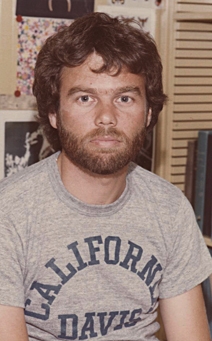
His work has garnered a significant impact in the scientific community through his research on the evolutionary genetics and social behavior of honey bees. He was the first to demonstrate that a significant amount of observed behavioral variation among honey bee workers is due to genotypic variation. In the 1990s he and his students and colleagues isolated, characterized and validated the complementary sex determination gene of the honey bee; considered the most important paper yet published about the genetics of Hymenoptera. The journal Cell featured their work on its cover. In subsequent studies, he and his team published further research into the regulation of honey bee foraging, defensive and alarm behavior.
In addition to his pioneering work on the first genetic map of any social insect--demonstrating that the honey bee has the highest recombination rate of any eukaryotic organism mapped to date--Page was personally involved in genome mappings of bumble bees, parasitic wasps and two species of ants. His most recent work focuses on the genetic bases to individuality in honey bees; demonstrating genetic links between pollen and nectar collection, tactile and olfactory learning characteristics, and neuroendocrine function. This work provides the most detailed understanding to date of the molecular and genetic bases to task variation in a social insect colony.
He has authored than 250 research papers, including five books: among them The Spirit of the Hive: The Mechanisms of Social Evolution, published by Harvard University Press in 2013. He is a highly cited author onsuch topics as Africanized bees, genetics and evolution of social organization, sex determination, and division of labor in insect societies. His resume shows more than 18,000 citations.
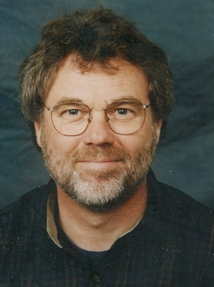
In 2004, Page was recruited by ASU as the director of the School of Life Sciences of Arizona State University (ASU). He organized three departments--biology, microbiology and plant sciences, comprising more than 600 faculty, graduate students, postdoctoral fellows and staff--into one unified school. As its founding director, he established the school as a platform for discovery in the biomedical, genomic and evolutionary and environmental sciences. He also established ASU's Honey Bee Research Facility.
His ASU academic career advanced to a number of titles: dean of Life Sciences; vice provost and dean of the College of Liberal Arts and Sciences; and university provost. Today he holds the titles of provost emeritus of ASU and Regents professor emeritus, as well as UC Davis department chair emeritus, professor emeritus, and now distinguished emeritus professor.
Page's colleagues laud his strategic vision, his innovative leadership, and his stellar contributions to science.
James R. Carey, distinguished professor of entomology at UC Davis, who continues to work with Dr. Page on research projects, describes him as "one of the most gifted scientists, administrators, and teachers I have had the privilege to know in 30 years in academia.”
Colleague Bert Hoelldobler, an ASU professor of life sciences, said Page is “the leading honey bee geneticist in the world. A number of now well-known scientists in the U.S. and Europe learned the ropes of sociogenetics in Rob's laboratory.”
Bee breeder-geneticist Susan Cobey, former manager of the Laidlaw facility and now of Washington State University, praised Page's major contributions to the beekeeping industry, including the Page-Laidlaw Closed Population Breeding Theory. This has offered a practical system of stock improvement for honey bees, used worldwide, she said. “It's a challenge, as the queen mates in flight with numerous drones and selection is based upon complex behaviors at the colony level, influenced by the environmental.” She has applied this theory throughout her career, developing and maintaining a population of Carniolan bees, now in their 36th generation.
Among Page's many honors:
- Fellow of the American Association for the Advancement of Science
- Awardee of the Alexander von Humboldt Senior Scientist Award (the Humboldt Prize - the highest honor given by the German government to foreign scientists)
- Fellow of the American Academy of Arts and Sciences
- Elected to the Leopoldina - the German National Academy of Sciences (the longest continuing academy in the world)
- Fellow of the Wissenschaftskolleg zu Berlin
- Fellow of the Entomological Society of America
- Fellow of the California Academy of Sciences
- Elected to the Brazilian Academy of Science
- Recipient of the James W. Creasman Award of Excellence from the Arizona State University Alumni Association
- Fellow, Carl Friedrich von Siemens Foundation, Munich, Germany, September 2017-August 2018
- Thomas and Nina Leigh Distinguished Alumni Award from UC Davis Department of Entomology and Nematology
Native pollinator specialist Robbin Thorp of the UC Davis Department of Entomology and Nematology received the UC Davis Distinguished Emeritus Award in 2015. He served on the faculty from 1964 to 1994. He is the co-author of Bumble Bees of California: An Identification Guide (2014, Princeton University Press) and California Bees and Blooms: A Guide for Gardeners and Naturalists (2014, Heyday Books).
